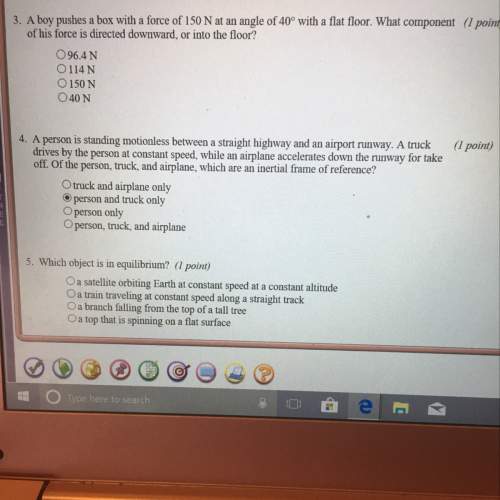
Physics, 28.06.2021 19:40 dannyboy5911
A disk of radius R and mass M is spinning at an angular velocity ω0 rad/s. A non-rotating concentric disk of mass m and radius r drops on it from a negligible height and the two rotate together. If R is 1.5 of r and M is 1.2 of m, what is the final angular velocity in terms of ω0? The moment of inertia of a solid cylinder is (1/2)MR2. (First got 0.64ω0, the second time I got 0.56 ω0)

Answers: 3


Other questions on the subject: Physics


Physics, 22.06.2019 05:10, linnialmira
A26 cm object is 18 cm in front of a plane mirror. a ray of light strikes the object and is reflected off the mirror at a 42-degree angle. what is the angle of reflection? degrees what type of image is formed? what is the size of the image? cm
Answers: 2

Physics, 22.06.2019 14:30, gabriellam20
A10nc charge sits at a point in space where the magnitude of the electric field is 1500 n/c. what will the magnitude of the field be if the 10 nc charge is replaced by a 20 nc charge? assume the system is big enough to consider the charges as small test charges.
Answers: 1
You know the right answer?
A disk of radius R and mass M is spinning at an angular velocity ω0 rad/s. A non-rotating concentric...
Questions in other subjects:



Mathematics, 19.03.2020 07:42


English, 19.03.2020 07:42


Mathematics, 19.03.2020 07:43



Mathematics, 19.03.2020 07:43




